Abstract
Rats were trained in a discrete-trial paradigm with no intertrial interval. The first response changed an auditory stimulus for the remainder of the trial. Shocks were delivered only at the end of the trial cycle. Avoidance contingencies were defined by the conditional probability of shock, given no response (P0), and the conditional probability of shock given a response (P1). The maximal avoidance contingency was P0=1.0, P1=0, and noncontingent conditions were those for which P0=P1. In Experiment I, after training on the maximal contingency, three groups of subjects experienced either P0=P1=0, P0=P1=0.5, or P0=P1=1.0. Eight of 10 subjects stopped responding under the noncontingent conditions. Experiment II studied partial contingencies by varying P0 and P1. For one group, P0 was reduced holding P1=0. Responding decreased to zero as P0 approached zero. A second group was studied under P1>0, holding P0=1.0. For three of the six rats in this group, responding decreased to zero with increasing P1. The other three maintained responding as P1 was increased up to the noncontingent, P1=P0=1.0 value. The P0 group was also studied with P0=P1>0, and half of these subjects responded. The results demonstrated two modes of response to weakening or eliminating the avoidance contingency. Some subjects were sensitive to contingency only, and insensitive to changes in shock density. Approximately one half of the subjects were sensitive to both contingency and shock density. This shared control was observed only when P1> 0.
Full text
PDF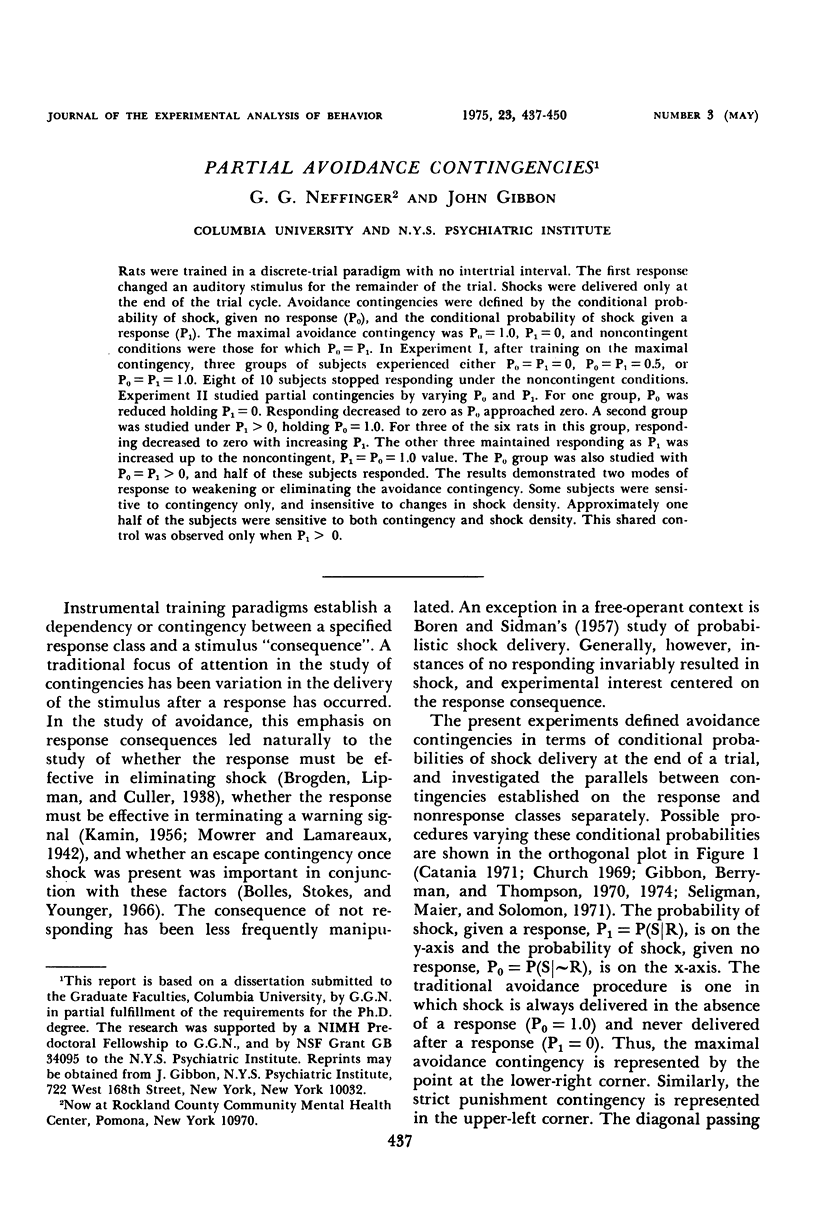
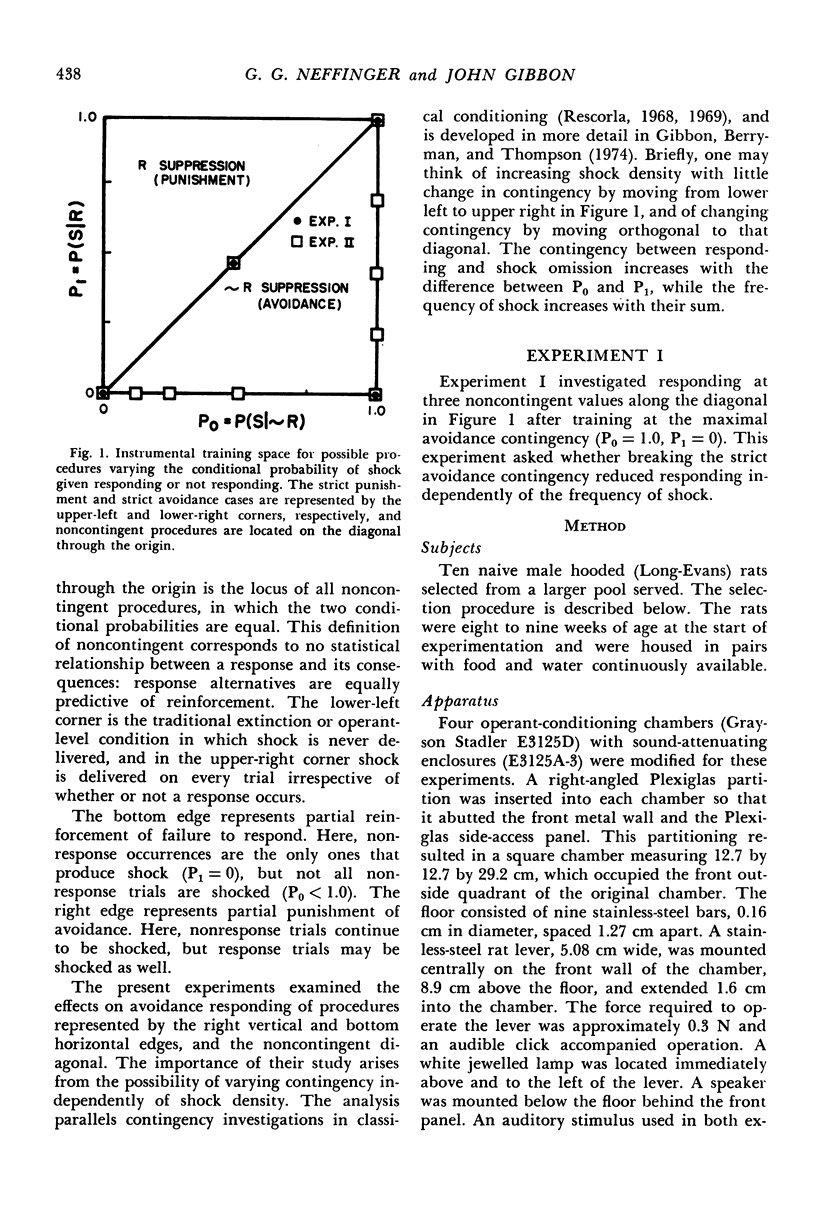
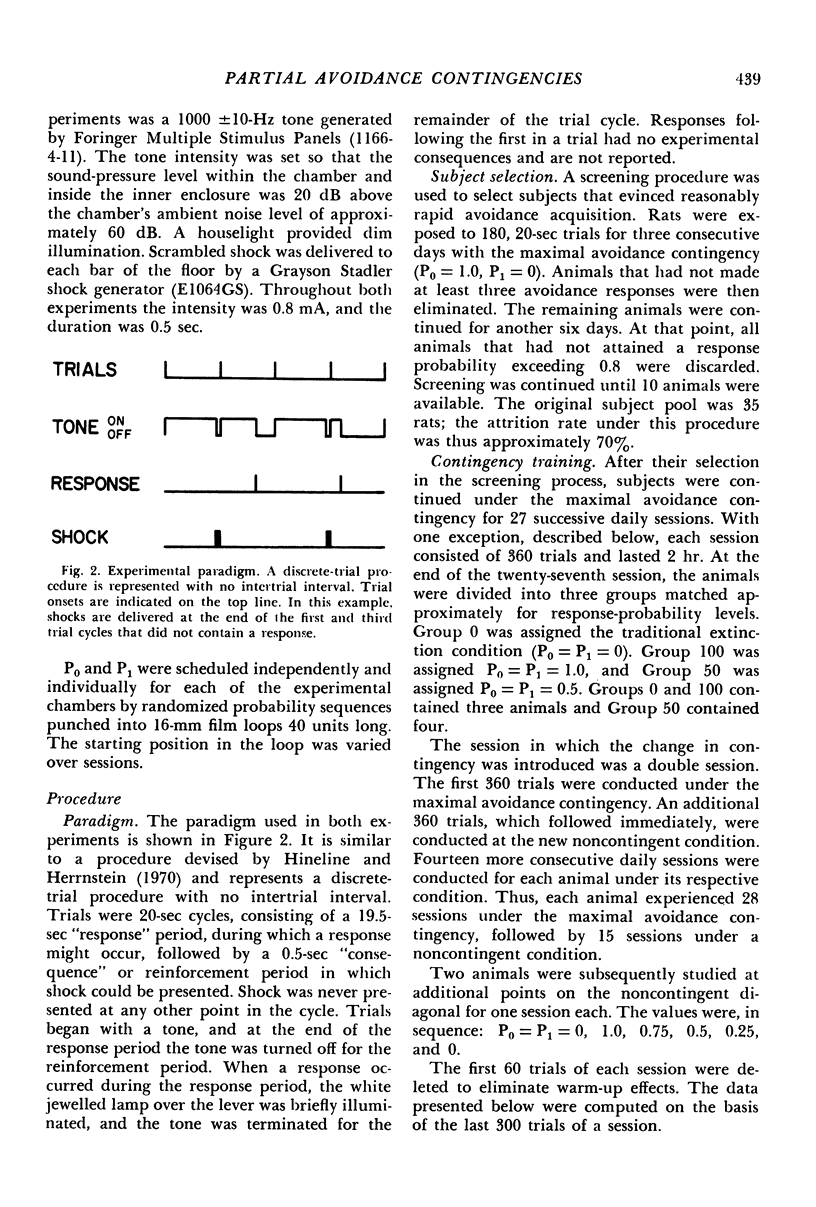
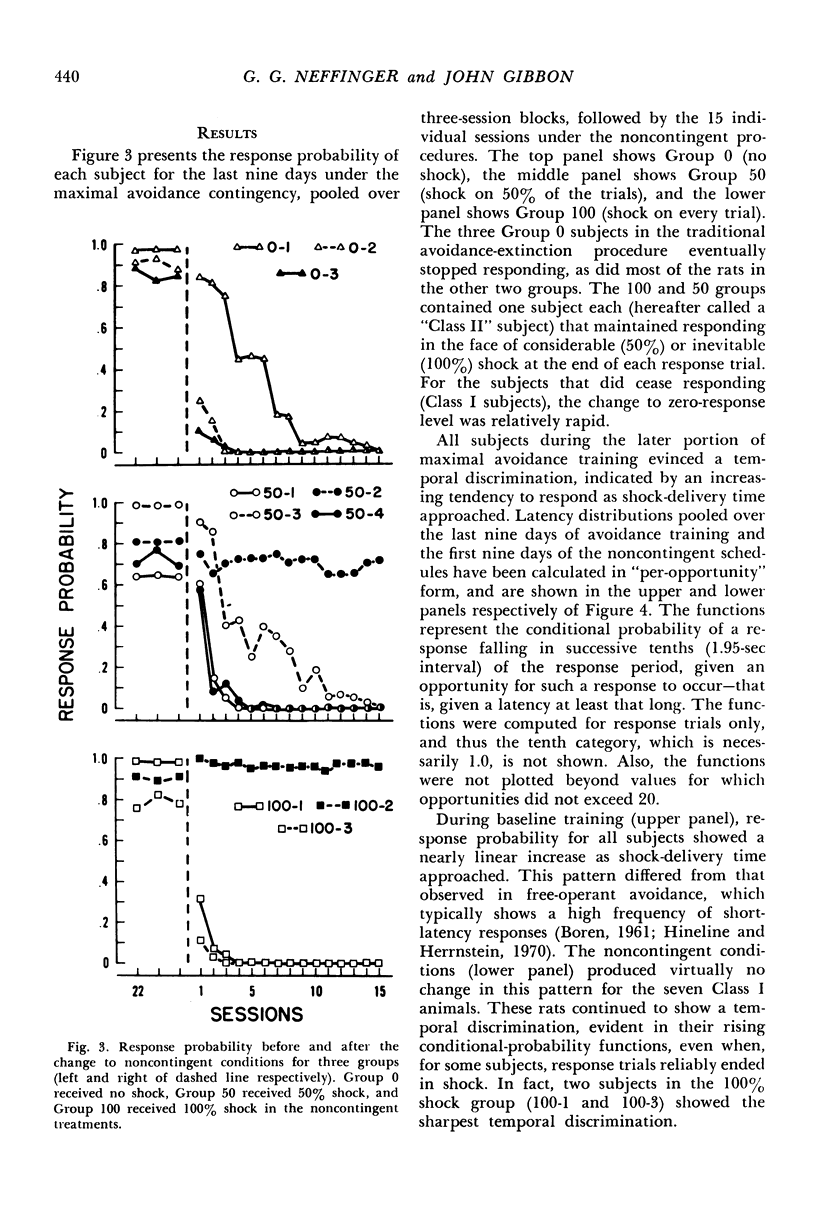

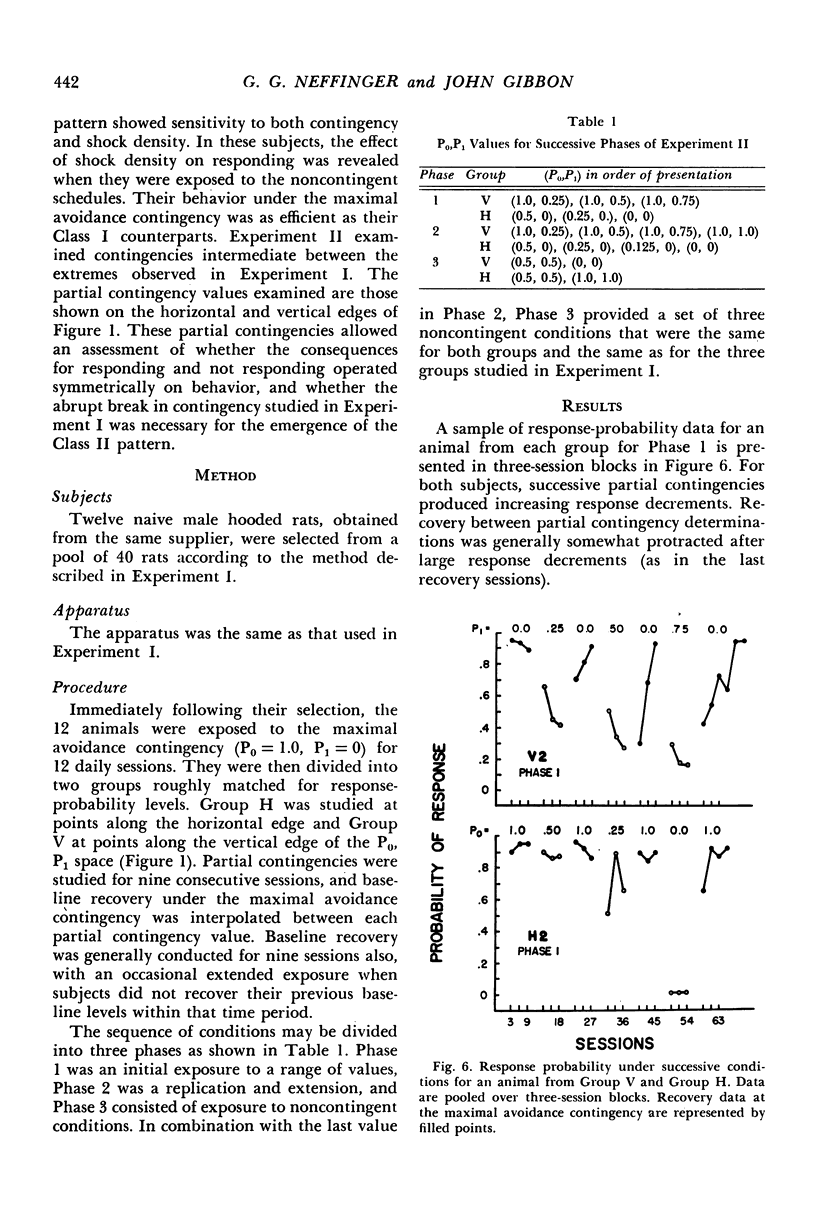


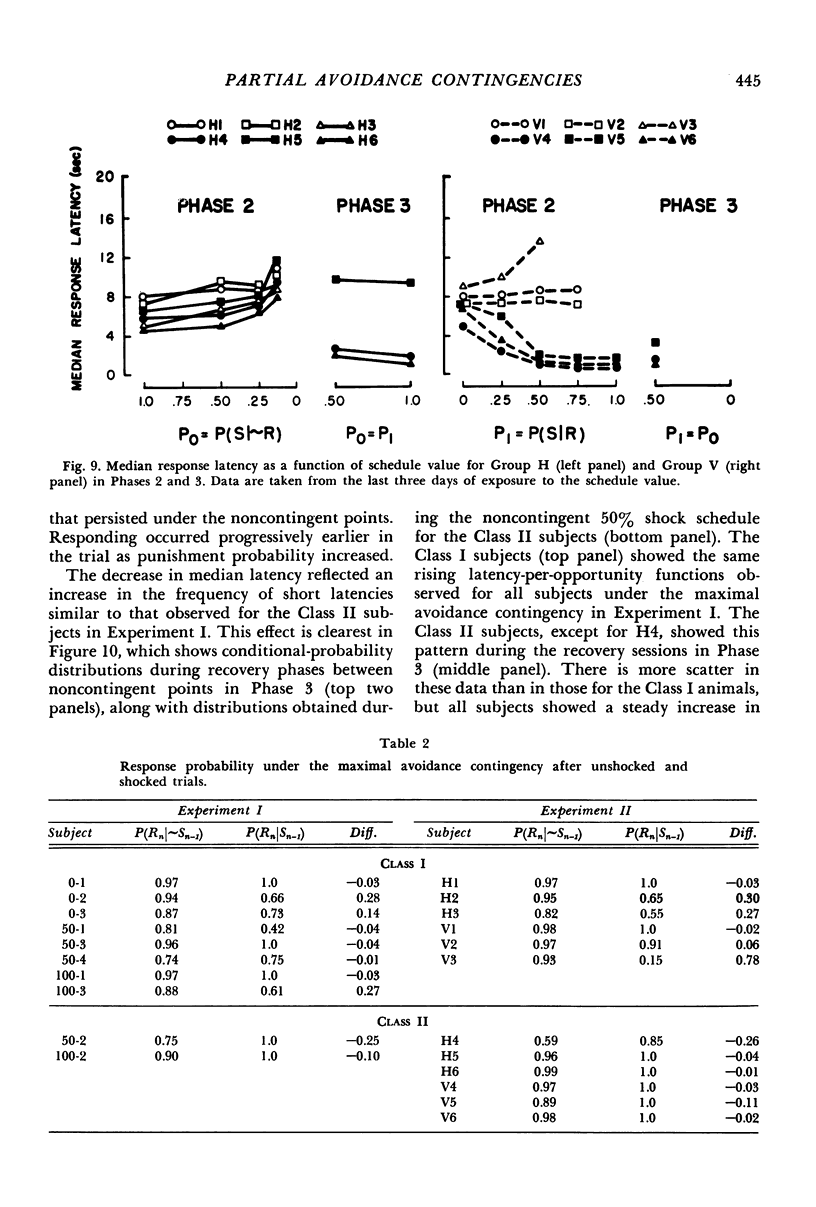
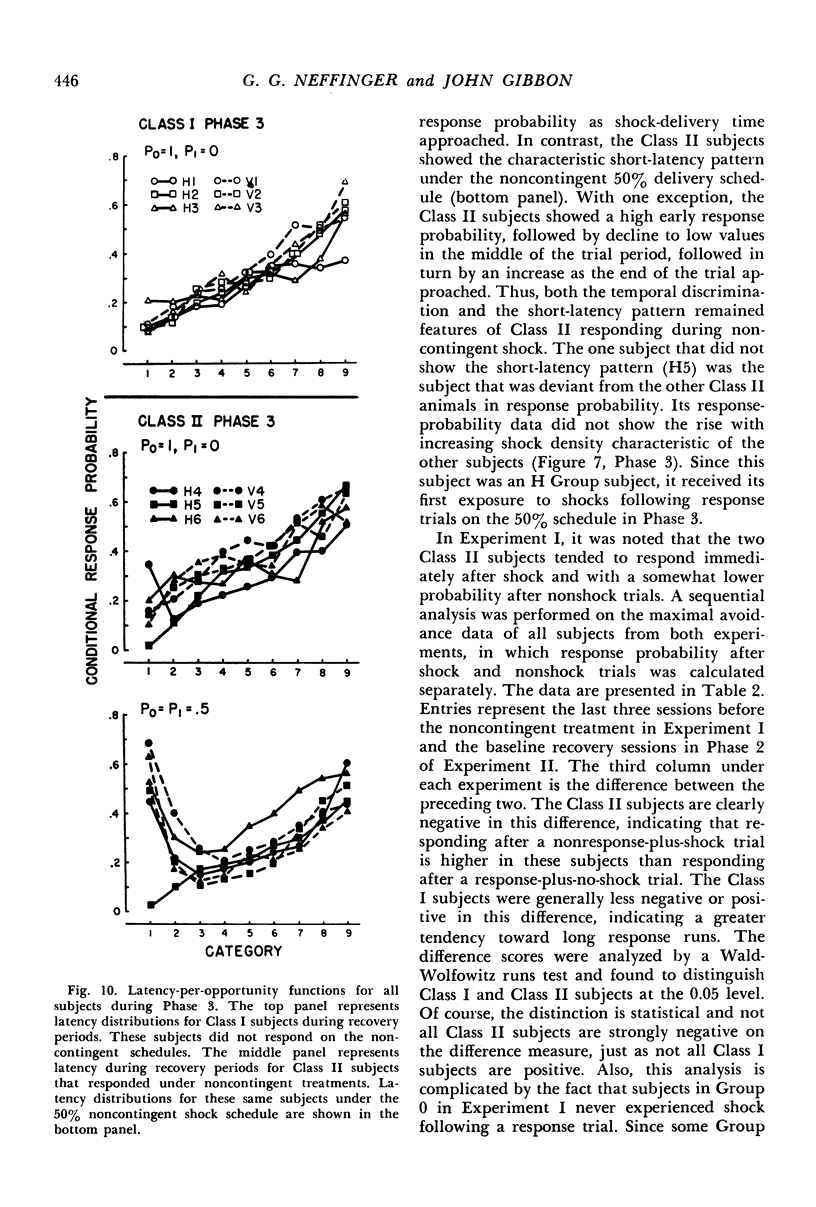
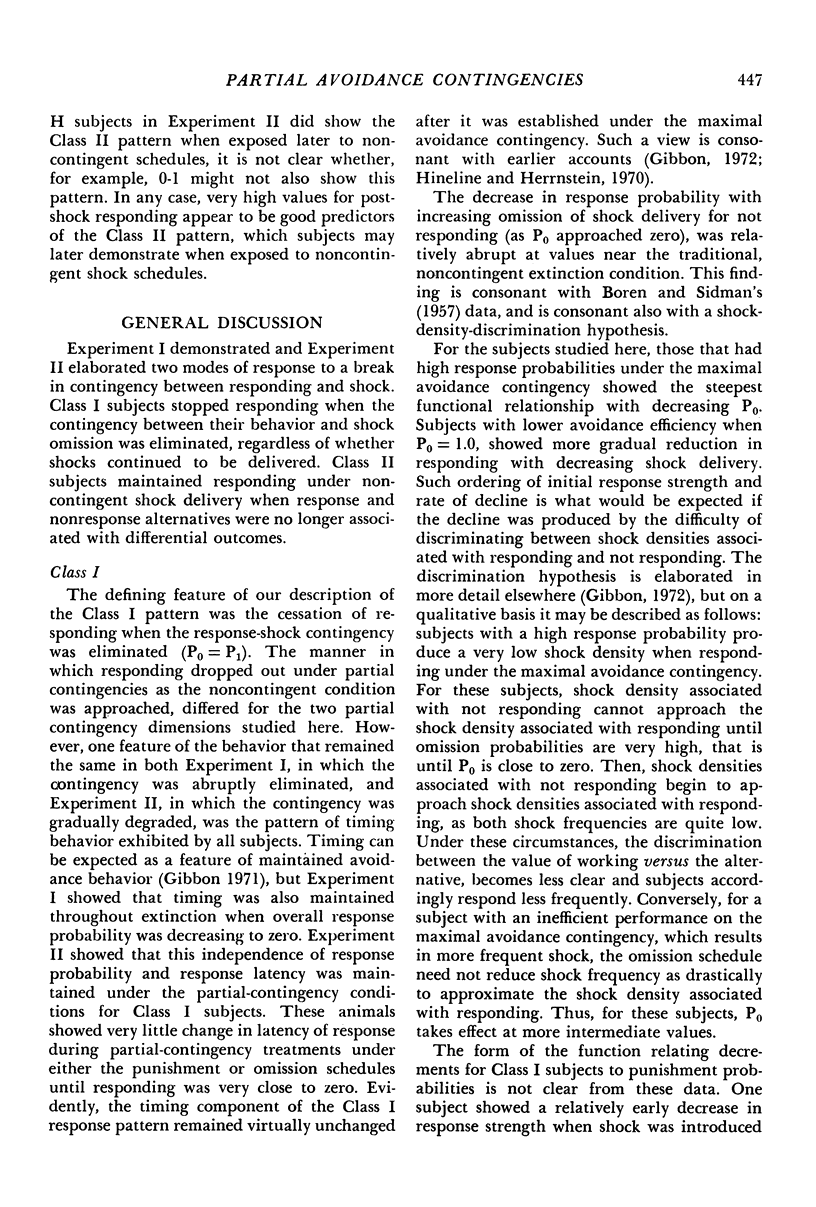
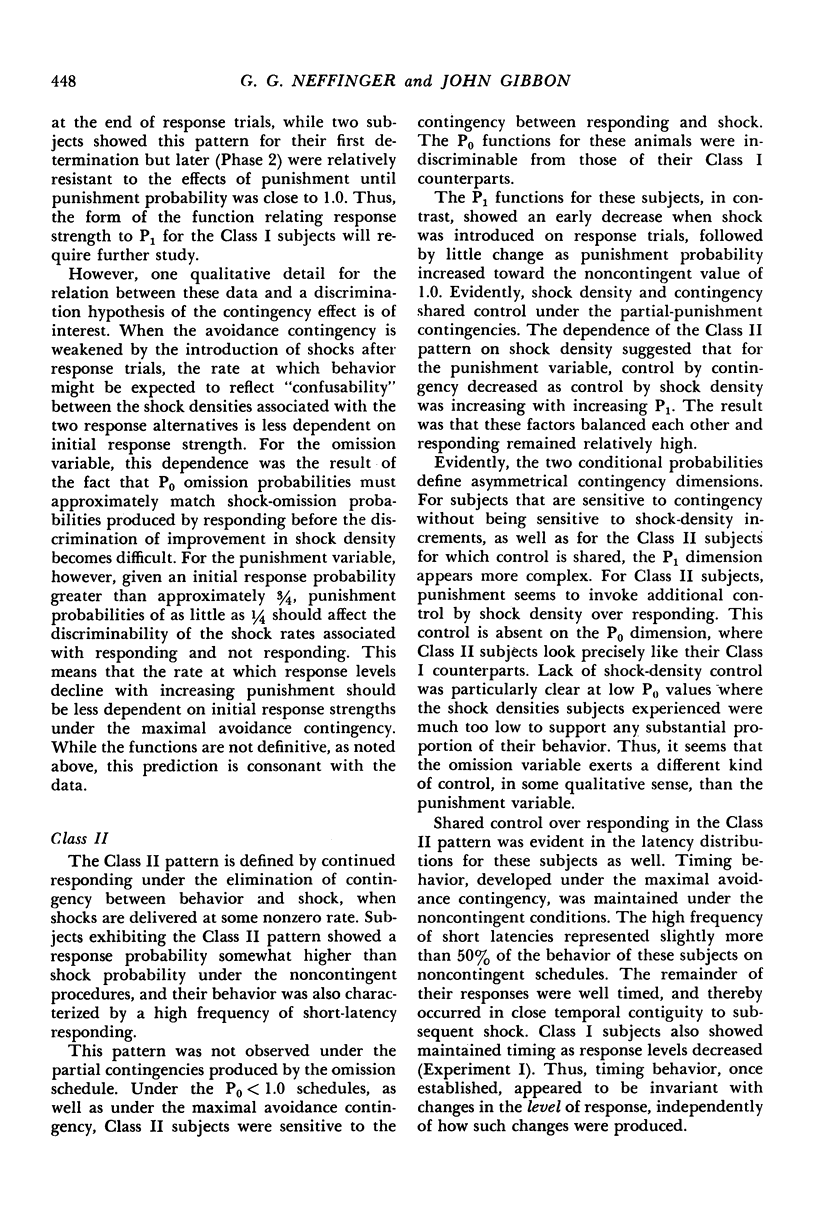
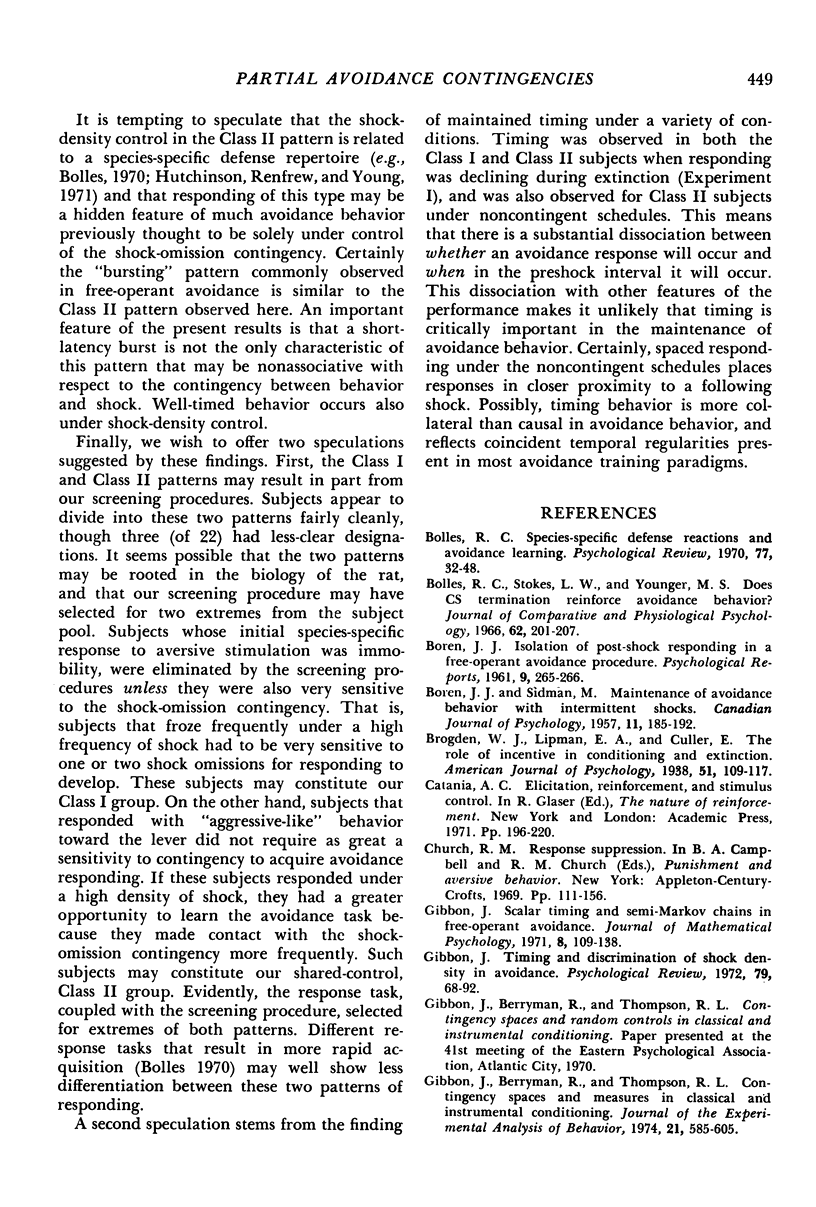
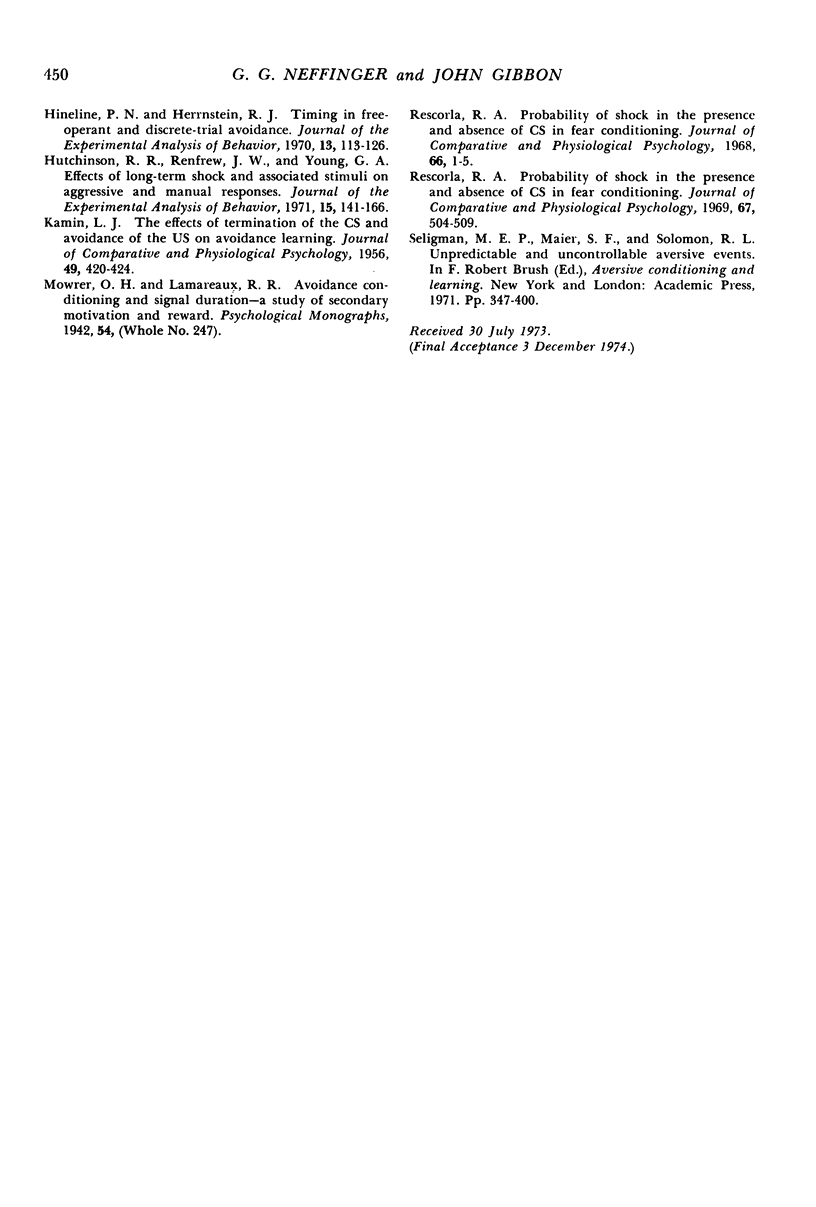
Selected References
These references are in PubMed. This may not be the complete list of references from this article.
- BOREN J. J., SIDMAN M. Maintenance of avoidance behaviour with intermittent shocks. Can J Psychol. 1957 Sep;11(3):185–192. doi: 10.1037/h0083704. [DOI] [PubMed] [Google Scholar]
- Bolles R. C., Stokes L. W., Younger M. S. Does CS termination reinforce avoidance behavior? J Comp Physiol Psychol. 1966 Oct;62(2):201–207. doi: 10.1037/h0023678. [DOI] [PubMed] [Google Scholar]
- Gibbon J., Berryman R., Thompson R. L. Contingency spaces and measures in classical and instrumental conditioning. J Exp Anal Behav. 1974 May;21(3):585–605. doi: 10.1901/jeab.1974.21-585. [DOI] [PMC free article] [PubMed] [Google Scholar]
- Hineline P. N., Herrnstein R. J. Timing in free-operant and discrete-trial avoidance. J Exp Anal Behav. 1970 Mar;13(2):113–126. doi: 10.1901/jeab.1970.13-113. [DOI] [PMC free article] [PubMed] [Google Scholar]
- Hutchinson R. R., Renfrew J. W., Young G. A. Effects of long-term shock and associated stimuli on aggressive and manual responses. J Exp Anal Behav. 1971 Mar;15(2):141–166. doi: 10.1901/jeab.1971.15-141. [DOI] [PMC free article] [PubMed] [Google Scholar]
- KAMIN L. J. The effects of termination of the CS and avoidance of the US on avoidance learning. J Comp Physiol Psychol. 1956 Aug;49(4):420–424. doi: 10.1037/h0088011. [DOI] [PubMed] [Google Scholar]
- Rescorla R. A. Conditioned inhibition of fear resulting from negative CS-US contingencies. J Comp Physiol Psychol. 1969 Apr;67(4):504–509. doi: 10.1037/h0027313. [DOI] [PubMed] [Google Scholar]
- Rescorla R. A. Probability of shock in the presence and absence of CS in fear conditioning. J Comp Physiol Psychol. 1968 Aug;66(1):1–5. doi: 10.1037/h0025984. [DOI] [PubMed] [Google Scholar]


